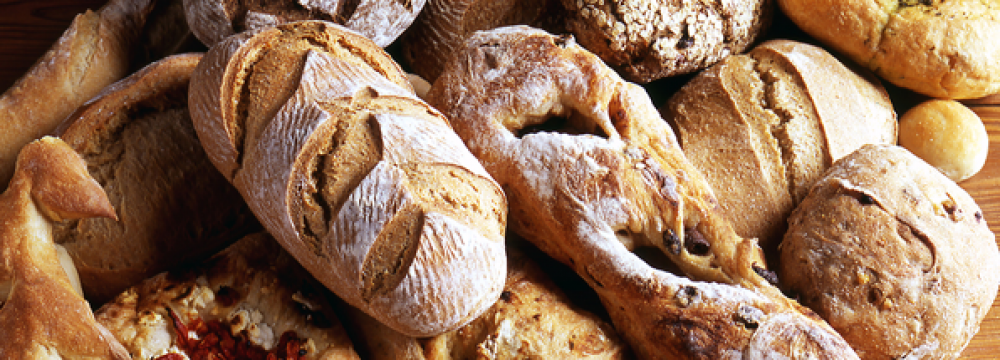One of my pet peeves is the veritable deluge of prepared foods and “meal assembly” emporia that has overtaken America and seem to be spreading like a stain across the rest of the world. Walk into any store selling food, and there they sit – ready-to-heat main courses and side of every imaginable ethnicity and ingredient, indistinguishable, or so the labels claim, from home-cooked (and, of course, priced at a hefty premium over the cost of the ingredients themselves). Nor is it only the mains and sides:to see how pervasive the ready-tos have become, take a walk down the aisles of any supermarket and keep mental notes of all the things you can eat right out of the container, or that pre-mix key ingredients (think cake mixes).
Even as recently as 20 years ago or so, an industrial food takeover on this scale was inconceivable, yet very much in the cards. I forget the context, but remember well reading an article in the ’90s that spoke about seasoning mixes that would enable butchers to reap higher profits from value-added, ready-to-cook steaks, roasts and poultry. At around that same time, during my stint on Wall Street, I worked with the CEO of a company, now defunct, that pioneered treatments for cut fruits and vegetables that all but eliminated discoloration. One has only to look at the proliferation of pre-bagged cut produce to see how visionary the idea was.
What’s behind it? Obviously, from the food processors’ perspective, it’s about profits. Anything you do to an ingredient changes it from commodity to unique product, and in so doing, lowers its vulnerability to the pure-price nature of the commodity markets, taking it instead to a higher realm, where branding and marketing operate to keep prices and profits high. Never mind that the bulk of industrial food processing is based on water and sugar (including fructose sweeteners), the cheapest of additives that also offer processors the advantage of an ultra-low-cost way to increase weight – both the product’s and the consumer’s (hah!).
There’s a second important financial consideration for the producers as well: labor. From-scratch food preparation requires skilled workers who can command premium wages. The workers needed to cook from mixes and industrial ready-to-heats can be had for minimum wage. Even better, machines don’t get sick or have hangovers, and a retailer can always be certain of having enough product because his distributors will have warehouses full. Once again, technology and industrial production trump competence and experience.
From the consumer’s point of view, those dishes represent savings of time and energy, but at the very dear cost of control and competence. The time issues are understandable. When I was growing up in the ’50s, moms and grandmas stayed at home and had time to shop and cook; today’s economically stressed world puts far more pressure on everyone to go out and find ways to earn money. The simple act of preparing and serving a meal has gone from pleasure to chore, and my grandmother’s pride in feeding her family has given way to a sigh of relief at not having to cook, without the guilt of having failed at this most basic of family responsibilities.
That guilt also is the driving rationale behind the “meal assembly” stores, where people can go to assemble a week’s worth of their own ready-to-heat dinners. Everything is there, pre-cooked and portion-controlled, ready to mix and match into microwaveable containers. It’s exactly the same mindset that built the cake-mix business and propelled bread machines into the appliance mainstream: here’s a way to produce a Rembrandt – or at least an acceptable reproduction – without having to learn how to paint, let alone draw.
At what cost? Monetary, certainly: the ready-tos are substantially more expensive than the sum cost of their ingredients. But more troubling, in my view, is the personal cost. I want to be able to control what goes into the things my family and friends eat. I don’t want chemical life-extenders, mold inhibitors or potentially hazardous additives (think potassium bromate and genetically engineered ingredients) in my food. I want to decide how my food tastes, and not leave it to some food chemist who’s motivated by corporate profitability targets and focus-group driven consensus. I want to know how to make the things that please my senses and those of the people I care about, so that I can encourage others to value their own competence.
My wife and I often engage in a revealing dialogue when we go food shopping together. She’ll see a ready-to that she finds appealing and say, “Ooh, let’s try that.” I’ll look at it and say, “Why? I can make it better and cheaper at home.” Sometimes we buy it, sometimes we don’t, and more often than not, when we do, it’s either too sweet, too salty, or both for our tastes (mine, certainly, since she has a far bigger sweet tooth than I). But at least we have the ability to make that choice and still have what we want.

I always think of the huge bags of frozen ‘insta-meals’, or the ‘side accompaniments’, to ‘your own FRESH chicken’, or whatever as People Chow. Several years ago, while watching Food Network, I would get irritated at a certain commercial, wherein a family would arrive home, from work/school…go into their luxuriously appointed $80K kitchen, and whip out a saute pan, and dump frozen veggies/chicken into it…all so they could have a ‘home-cooked’ meal.
When those sorts of meal additions first came out, I did indeed try one or two, and found that they actually tasted horrid…too salty, and almost a sort of chemical aftertaste. No thanks! I can find 20 minutes or so to actually prepare fresh veggies/pasta/rice, and some sort of protein, all by myself, and seasoned with MY idea of the proper herbs/spices. Honestly, I think a lot of it points to people just never having learned to cook, along with the rush-rush of modern society.